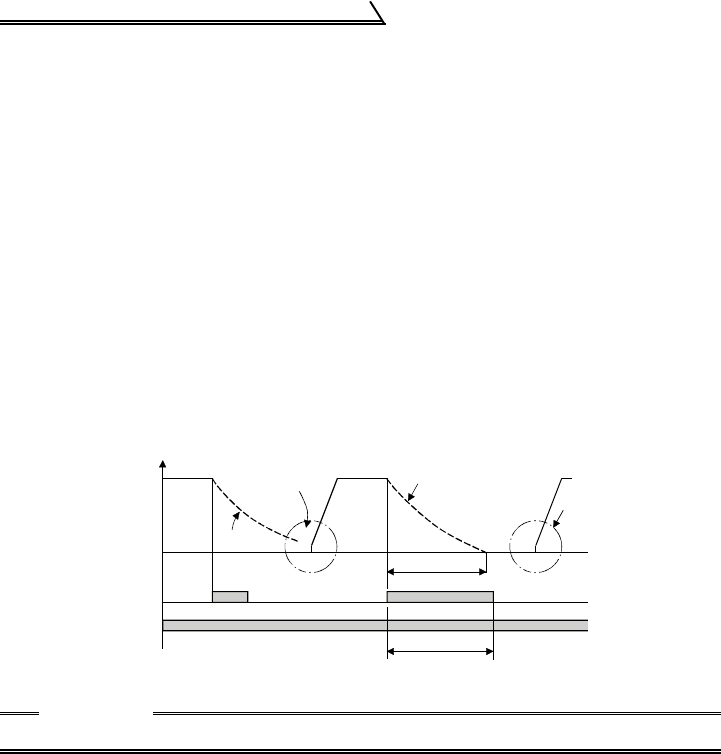
20
How to Use the Input Signals (Assigned Terminals
RL, RM, RH, STR, SQ)
1.9.4 Reset signal:
Pr. 60 to Pr. 63, Pr. 65, Pr. 505 setting
"10"
Used to reset the alarm stop state established when the inverter's protective function
is activated. The reset signal immediately sets the control circuit to the initial (cold)
status, e.g. initializes the electronic overcurrent protection circuit. It shuts off the
inverter output at the same time. During reset, the inverter output is kept shut off. To
give this reset input, short terminals RES-SD for more than 0.1s. When the shorting
time is long, the operation panel or parameter unit displays the initial screen, which is
not a fault.
Operation is enabled after terminals RES-SD are opened (after about 1s).
The reset terminal is used to reset the inverter alarm stop state. If the reset terminal is
shorted, then opened while the inverter is running, the motor may be restarted during
coasting (refer to the timing chart below) and the output may be shut off due to
overcurrent or overvoltage.
Setting either of "1" and "15" in reset selection Pr. 75 allows the accidental input of the
reset signal during operation to be ignored.
(For details, refer to page 71.)
1.9.5 Start (forward rotation) signal:
Pr. 65 setting
"17"
Turn the signal on or off to bring the motor to a forward rotation start or stop.
(Refer to page 15 for details.)
CAUTION
Frequent resetting will make electronic overcurrent protection invalid.
ON
ON
ON
T
Output frequency (Hz)
Across
RES-SD
A
cross STF
(
STR)-SD
When motor is restarted
during coasting, inverter
activates current limit to
start acceleration.
Coasting
Coasting to stop
(Indicates motor speed)
Ordinary
acceleration
Coasting time
T: Should be longer than the time
of coasting to stop.


















